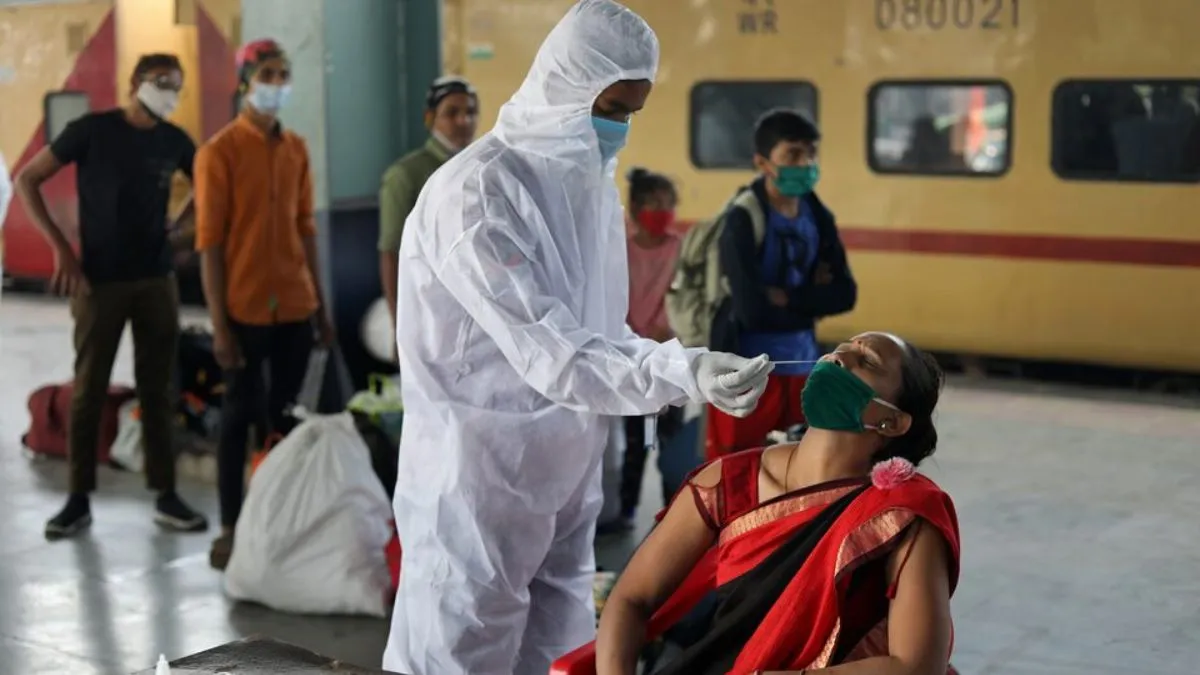- By Supratik Das
- Mon, 26 May 2025 12:23 PM (IST)
- Source:JND
The World Health Organization (WHO) has put the Omicron sub-variant JN.1 in its "variant of interest" category after COVID-19 cases began to surge again around the world, especially in Asia and the United States. Though the ongoing wave has not yet provided hints at growing severity, WHO requested countries to continue intensified surveillance and testing measures, particularly with the emergence of new sub-lineages like NB.1.8.1 and LF.7. The JN.1 lineage, a sub-lineage of Omicron, is being monitored closely together with its new relatives NB.1.8.1 and LF.7. While these strains have shown high transmissibility, WHO has reaffirmed that they are low global health risk currently. Experts opine that increased mobility after festivals, gatherings, and the decline in immunity could be adding to the slow uptick in infections.
A sudden surge in COVID-19 cases has been seen in Singapore, Hong Kong, Thailand, and China, raising regional alerts. In the US, NB.1.8.1 has been detected among international travelers in California, Washington, Virginia, and New York, inferring global transmissibility. So far, as per the WHO, in the last 7 days, 5,037 cases have been reported.
Uptick In COVID-19 cases In India
India has reported a total of 257 active cases of COVID-19 as of May 26, 2025, representing a gradual increase in infections in various states, such as Maharashtra, Kerala, Delhi NCR, and Karnataka. Health authorities attribute the recent jump in cases to the viral spread of highly infectious Omicron sub-variants JN.1, LF.7, and NB.1.8.1, which are currently closely watched by the World Health Organization (WHO).
ALSO READ: Covid-19 Cases Spike In Asia: Is Another Wave Coming? Here’s What Indian Travellers Need to Know
Symptoms To Keep An Eye Out For, WHO Warns
Based on recent WHO reports, the most frequent symptoms of the NB.1.8.1 variant are:
• Sore throat
• Cough
• Fever
• Fatigue
• Muscle pain
• Nasal congestion
• Headaches
• Gastrointestinal discomfort and nausea
Interestingly, loss of smell and taste, one of the prominent symptoms of previous strains, has not been reported in recent cases. WHO suggests home antigen testing or RT-PCR for those showing symptoms and advises them to check for oxygen levels frequently. The majority of recent deaths have occurred in people with pre-existing medical conditions. In Thane, a 21-year-old diabetic male died after testing positive, and doctors have blamed his death on ketoacidosis. This was the fourth COVID-positive death this month in Greater Mumbai. The non-vaccinated, particularly young adults, seem to be at higher risk. Experts recommend that children who will turn 18 years this year get vaccinated, as so far, only 18% of the population has taken the Omicron-specific booster. Health officials keep insisting that citizens should not panic, but rather be careful. The simple preventive practices like wearing masks where crowds congregate, washing hands frequently, and avoiding congregating are recommended.

